His eyes flitted forward and back, and having surveyed the scene for possible danger, it stopped. The head stooped, and that was how he stayed. Crouched on the floor of a bus full of Bangalis, the Pahari (hill person) amongst us, was living in occupied land. Keeping out of trouble was his best chance for survival.
It was only when the uniformed men with guns boarded the bus and prodded him that he raised his eyes. Scared, tired, hurt, angry eyes. But he knew enough to not express his anger. Meekly he obeyed the commands. His humiliation was also ours, but we did not complain. We were tourists in our own land, but the constitutional guarantees enshrined in our laws, while not fully respected anywhere, was particularly absent here. As well-connected Bangalis, we were far more safe than he was. But the rules of occupation are never generous, and they had guns. They left. We breathed more easily. He continued his journey with his head bowed. I took no photographs.
Walking through Rangamati as Bangali tourists was a disconcerting feeling. Many of the Bangalis here were also poor. Displaced from their homes in far away places, they had been dumped here with promises of a happy life. Left to fend for themselves, they joined the power chain well above the Paharis, but very low down all the same.
At the top of the chain was the military. Then the wealthy Bangalis, the ones who made the deals, then came the Paharis who had sided with the government. The Bangali settlers (the poor ones anyway), were quite a bit further down. The Paharis never dared to reach for the rungs of that ladder.
Rangamati was still a beautiful place. The homes buried beneath the lake when the Kaptai Dam was built, the tropical rain forests that had been destroyed, the hill people who were forced to leave their ancestral land, were things that never made it to our history books. The Hill Tracts featured in the picturesque postcards and tourism ministry books and the well rehearsed cultural programmes in the government Tribal Centre.
Occasional photographers from the lowlands came to discover the ?authentic tribal lifestyle?. A bare chest woman bathing by a waterfall, backlit women with children strapped on their backs, a wrinkled old woman smoking a pipe and other photographic trophies were potential award winners.
As anticipated, the tiktikis (lit: geckos, local term for government spies, generally members of ?Special Branch?) soon found us. They followed us everywhere. Asked stupid questions. Made notes. Questioned the people we had spoken to or visited. We consciously stayed away from friends. No point in getting them into trouble.
At a later visit, Drik?s printer Nasir and I had gone to Bandorban. Amongst the photographs I?d taken on that trip was this one of a mother weaving. Perhaps I was repeating what the trophy hunters had done, but the poster above the window, part of a UNICEF blindness prevention campaign, had words that seemed poignant. ?hai re kopal mondo, chokh thakite ondho?.? (oh what irony we find, we have eyes but are blind.)
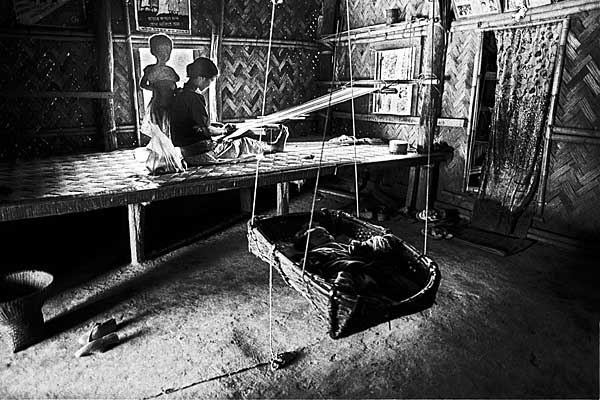
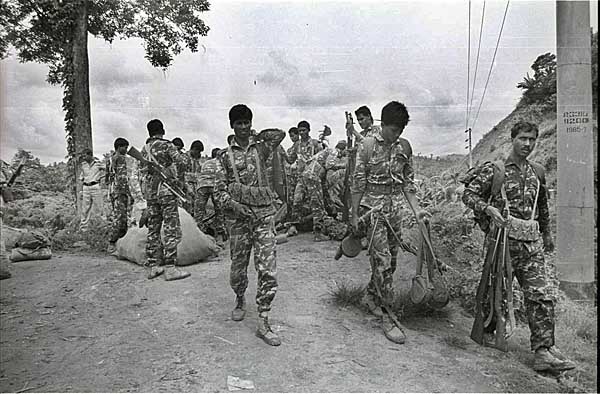
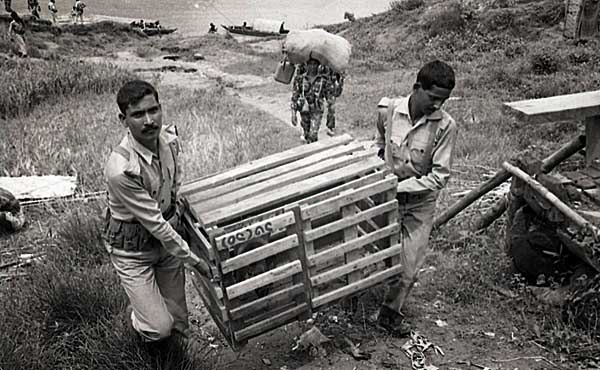
My eyes had shown me the military operations in the hill tracts. The deer being taken to the major?s home. The all Bangali military. The timber being taken to the military camp. While we did see Paharis, carrying loads, and doing odd jobs, most of the shop owners were Bangali settlers. It was Bangalis who had access to the government. They who obtained the local contracts. Menial labour was generally, all that Paharis could aspire to.
Kalpana Chakma?s abduction followed (12th June 1996). Friends got arrested. Some were released, but killed upon release. The violence continued, more murders, more rape, more displacement.
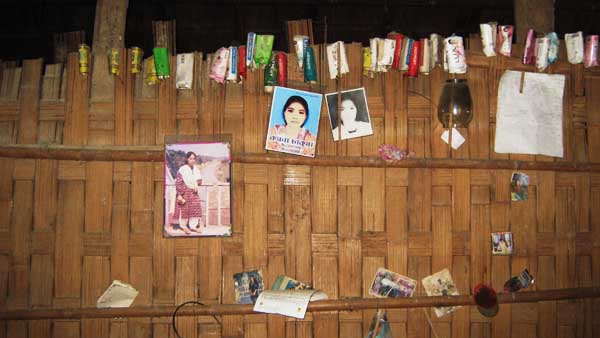
On 2nd December 1997 the newly elected Awami League (1996) signed the ?Peace Treaty? with Jana Samhati Samiti (JSS). This had led to divisions amongst the hill people. Many felt that the core concepts of:
1.??????????? Autonomy for the Chittagong Hill Tracts.
2.??????????? Withdrawal of the Bangali settlers.
3.??????????? Demilitarization of the Chittagong Hill Tracts.
were being compromised. Others were more pragmatic. Even those who questioned the signing of the treaty by JSS, despite their demands not having been met, recognise that peace in CHT is the ultimate goal, and that the land disputes that resulted from the government aided settlement of Bangalis was the core cause of the conflict.
The sole purpose of a nation?s military is to protect the sovereignty of all of its citizens, not to suppress them. The need to protect a nation?s borders cannot justify the forced eviction of people from their ancestral land. The disregard for even the commitments made, exposed the government?s lack of sincerity to the peace deal. Imperfect though it may be, for those clinging to the flimsiest of promises, the treaty still held hope.
The irony of the military and the settlers – in the second term of the Awami League – choosing the month of February, to remind the Paharis of how brutal they could be, was not lost on the survivors of the massacre. Salauddin, Jabbar, Barkat, Rafiq and Salam had died in 1952 to protect our mother tongue. In February 2010 many Pahari names joined the list of people who died for their mother tongue. But these different sounding names would never make it to that official list.
These were names that probably didn?t exist anyway. Without rights to land, citizenship and protection of the state, they were second class citizens at best, fugitives to be hunted, raped and killed at worst.
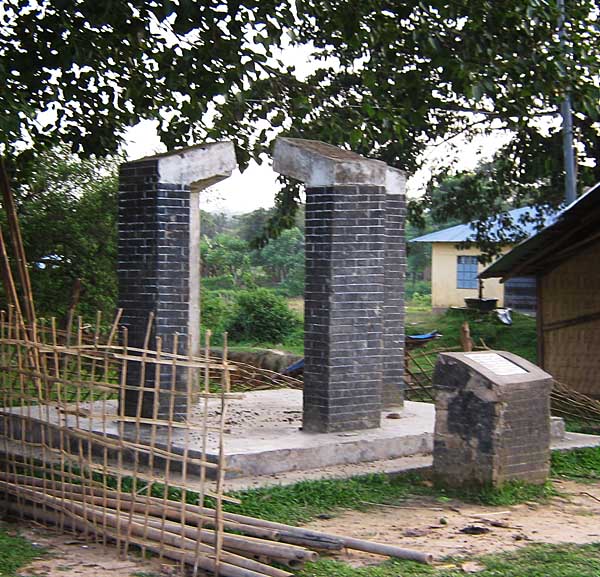
matri bhasha (mother tongue), has a very different meaning when your mother is Pahari. Kalpana,?I failed you as a brother, when they abducted you. I failed you as a friend, when they killed your brothers Mantosh, Samar, Shukesh and Rupan. I fail you now as a citizen, when my military and my government burn your villages, murder your families, take away your land. I fail you all as a human being, when you are prevented from laying flowers at the Shahid Minar in your village home. amar bhaier rokte rangano, ekushey february. ami ki bhulite pari. This month, red with your warm blood. I cannot, will not, must not, ever forget.
Shahidul Alam
Dhaka
28th February 2010
A story in Croatia with similar concerns:
Tag: Migration
Changing their destiny
Letter from Bangladesh
Intro to film: In Search of the Shade of the Banyan Tree ? Shahidul Alam/DrikAV
They all have numbers. Jeans tucked into their high-ankled sneakers. They strut through the airport lounge, moving en masse. We work our way up the corridors leading to the airplane, but many stop just before boarding. The cocky gait has gone. The sad faces look out longingly at the small figures silhouetted on the rooftops. They wave and they wave and they wave. The stewardess has seen it all before and rounds them up, herding them into the aircraft. One by one they disengage themselves, probably realizing for the first time just what they are leaving behind.

Inside the aircraft it is different. They look around at the metallic finish of the interior, try on the headphones and drink lemonade. They have seats together and whisper to each other about each new thing they see. Abdul Malek, sitting opposite me, is in his early twenties. He is from a small village not far from Goalondo. This is his second attempt. He was conned the first time round. This time his family has sold their remaining land as well as the small shop that they part-own. This time, he says, he is going to make it.

As in the case of the others, his had been no ordinary farewell. They had all come from the village to see him off. Last night, as they slept outside the exclusive passenger lounge, they had prayed together. Abdul Malek has few illusions. He realizes that on $110 a month, for 18 months, there is no way he can save enough to replace the money that his family has invested.

But he sees it differently. No-one from his village has ever been abroad. His sisters would get married. His mother would have her roof repaired, and he would be able to find work for others from the village. This trip is not for him alone. His whole family, even his whole village, are going to change their destiny.

That single hope, to change one’s destiny, is what ties all migrants together ? whether they be the Bangladeshis who work in the forests of Malaysia, those like Abdul Malek, who work as unskilled labour in the Middle East, or those that go to the promised lands of the US. Not all of them are poor. Many are skilled and well educated. Still, the possibility of changing one’s destiny is the single driving force that pushes people into precarious journeys all across the globe. They see it not merely as a means for economic freedom, but also as a means for social mobility.
In the 25 years since independence the middle class in Bangladesh has prospered, and many of its members have climbed the social ladder. But except for a very few rags-to-riches stories, the poor have been well and truly entrenched in poverty. They see little hope of ever being able to claw their way out of it, except perhaps through the promise of distant lands.

So it is that hundreds of workers mill around the Kuwait Embassy in Gulshan, the posh part of Dhaka where the wealthy Bangladeshis and the foreigners live. Kuwait has begun recruiting again after the hiatus caused by the Gulf War, and for the many Bangladeshis who left during the War, and those who have been waiting in the wings, the arduous struggle is beginning. False passports, employment agents, attempts to bribe immigration officials, the long uncertain wait.
Some wait outside the office of ‘Prince Musa’ in Banani. He is king of the agents. His secretary shows me the giant portraits taken with ‘coloured gels’, in an early Hollywood style. She carefully searches for the admiration in my eyes she has known to expect in others. She brings out the press cuttings: the glowing tributes paid by Forbes, the US magazine for and about the wealthy, the stories of his associations with the jet set. She talks of the culture of the man, his sense of style, his private jet, his place in the world of fashion.
Apart from the sensational eight-million-dollar donation to the British Labour Party in 1994 ? which Labour denies, but which the ‘Prince’ insists was accepted ? there are other stories. Some of these I can verify, like the rosewater used for his bath, and the diamond pendants on his shoes (reportedly worth three million dollars). Others, like his friendship with the Sultan of Brunei, the Saudi Royals and leading Western politicians, are attested to by photographs in family albums.
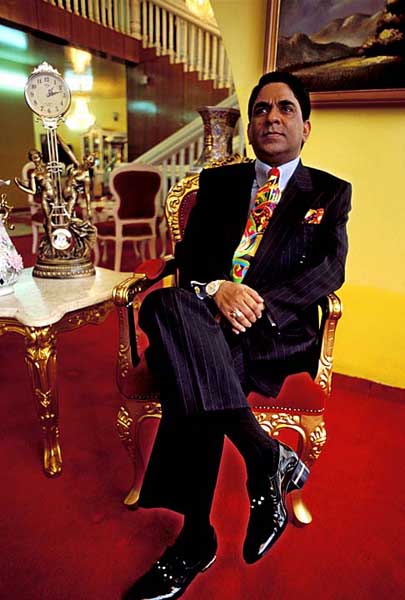
He was once a young man from a small town in Faridpur, not too distant from Abdul Malek’s home or economic position, who made good. Whether the wealth of the ‘Prince’ derives mainly from commissions paid by thousands of Maleks all over Bangladesh or whether, as many assume, it is from lucrative arms deals, the incongruity of it all remains: the fabulously wealthy are earning from the poorest of the poor.
Whereas the ‘Prince’ has emigrated to the city and saves most of his money abroad, Malek and his friends save every penny and send it to the local bank in their village. Malek is different from the many Bengalis who emigrated to the West after World War Two, when immigration was easier and naturalization laws allowed people to settle. Malek, like his friends, has no illusions about ‘settling’ overseas. He knows only too well his status amongst those who know him only as cheap labour. Bangladesh is clearly, irrevocably, his home. He merely wants a better life for himself than the Bangladeshi princes have reserved for him.
First published in the New Internationalist Magazine
Photo feature on migration
What Matters
Subscribe to ShahidulNews
The World’s Preeminent Photojournalists and Thinkers Depict Essential Issues of Our Time
Sterling. 2008. 335p. ed. by David Elliot Cohen. photogs. index. ISBN 978-1-4027-5834-8. $27.95. POL SCI
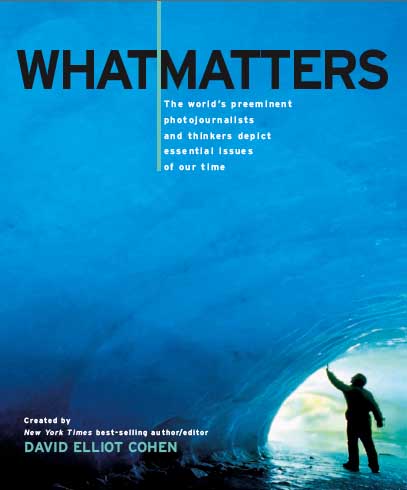
PHOTOGRAPHY EXPOSES TRUTHS, advances the public discourse, and demands action. In What Matters, eighteen important stories by today?s preeminent photojournalists and thinkers poignantly address the big issues of our time?global warming, environmental degradation, AIDS, malaria, the global jihad, genocide in
Darfur, the inequitable distribution of global wealth and others. A “What You Can Do” section offers 193 ways to learn more and get involved.
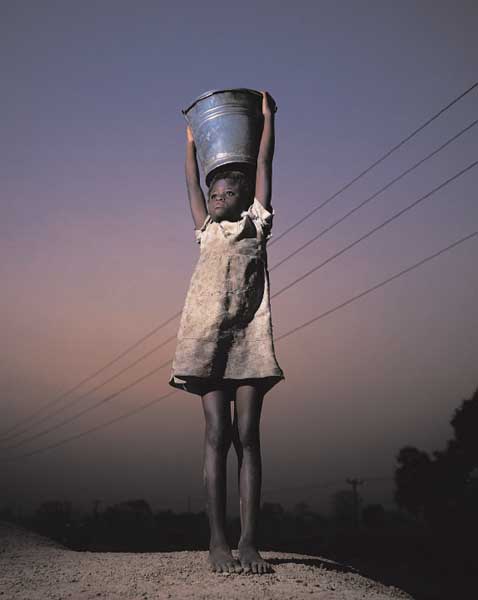
Photographed by:
Shahidul Alam ? The Associated Press ? Gary Braasch ? Marcus Bleasdale ? Raymond Depardon ? Paul Fusco ? Lauren Greenfield ? Maggie Hallahan ? Ed Kashi ? Gerd Ludwig ? Magnum ? Susan Meiselas ? James Nachtwey ? Shehzad Noorani ? Gilles Peress ? Sebasti?o Salgado ? Stephanie Sinclair ? Brent Stirton ? Tom Stoddart ? Anthony Suau ? Stephen Voss
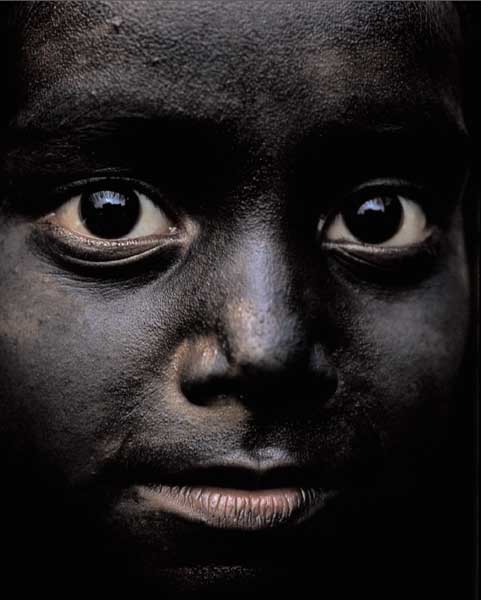
Commentary by:
Omer Bartov ? Judith Bruce ? Awa Marie Coll-Seck ? Richard Covington ? Elizabeth C. Economy ? Helen Epstein ? Fawaz A. Gerges ? Peter H. Gleick ? Gary Kamiya ? Paul Knox ? David R. Marples ? Douglas S. Massey ? Bill McKibben ? Samantha Power ? John Prendergast ? Jeffrey D. Sachs ? Juliet B. Schor ?
Michael Watts
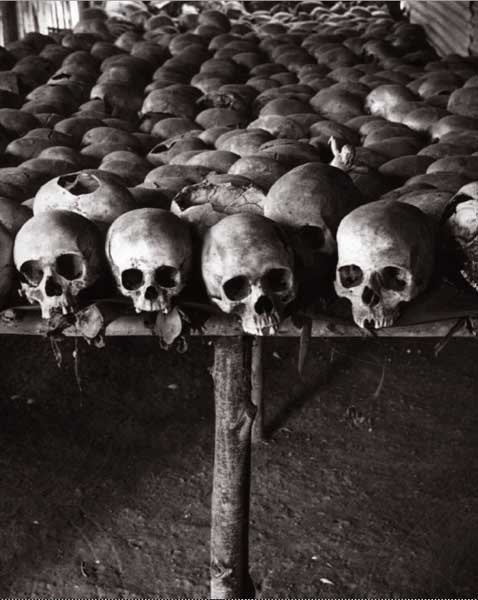
What Matters?an audacious undertaking by best-selling editor and author David Elliot Cohen?challenges us to consider how socially conscious photography can spark public discourse, spur reform, and shift the way we think. For 150 years, photographs have not only documented human events, but also changed their course?from Jacob Riis?s expos? of brutal New York tenements to Lewis Hine?s child labor investigations to snapshots of torture at Abu Ghraib prison. In this vein, What Matters presents eighteen powerful stories by this generation?s foremost photojournalists. These stories cover essential issues confronting us and our planet: from climate change and environmental degradation to global jihad, AIDS, and genocide in Darfur to the consequences of the Iraq war, oil addiction, and the inequitable distribution of global wealth. The pictures in What Matters are personal and specific, but still convey universal concepts. These images are rendered even more compelling by trenchant commentary. Cohen asked the foremost writers, thinkers, and experts in their fields to elucidate issues raised by the photographs.
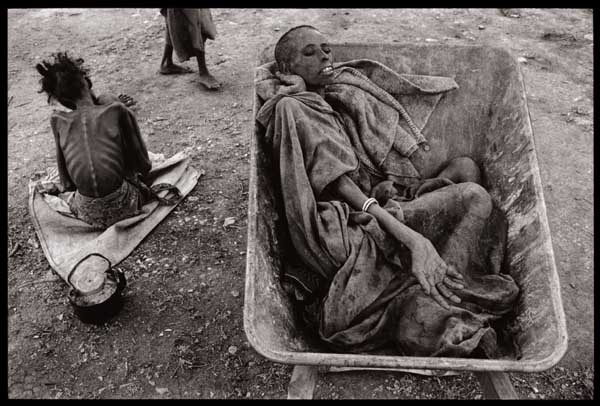
Some stories in What Matters will make you cry; others will make you angry; and that is the intent. What Matters is meant to inspire action. And to facilitate that action, the book includes an extensive ?What You Can Do? section??a menu of resources, web links, and effective actions you can take now.
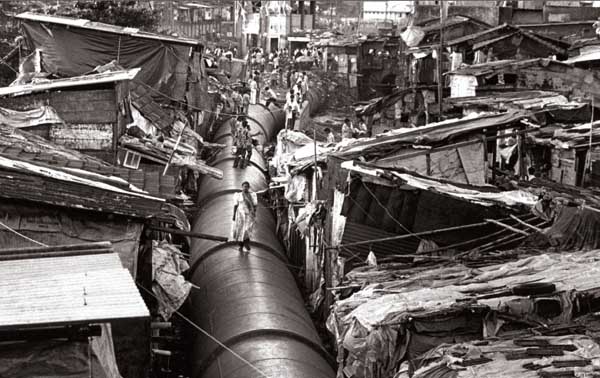
Cohen hopes What Matters will move people to take positive steps??no matter how small??that will help change the world. As he says in his introduction, the contributors? work is so compelling that ?if we show it to you, you will react with outrage and create an uproar.? If, says Cohen, you look at these stories and think, ?What?s the use? The world is irredeemably screwed up,? we should remember that, historically, outraged citizens have gotten results. ?We did actually abolish slavery and child labor in the US; we abolished apartheid in South Africa; we defeated the Nazis; we pulled out of Vietnam. As the saying goes, ?All great social change seems impossible until it is inevitable.? ?
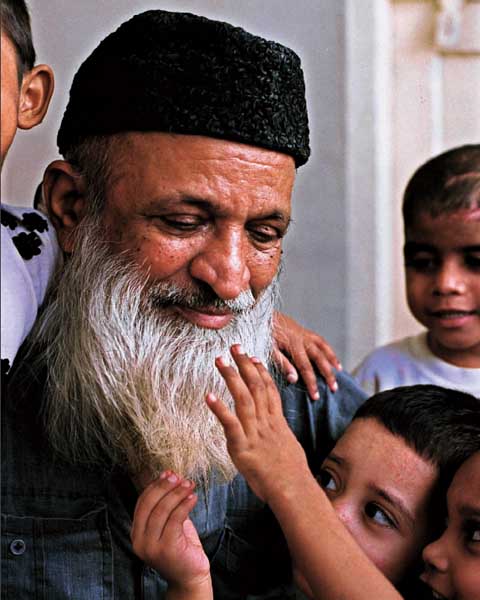
– Michael Zajakowski, Chicago Tribune
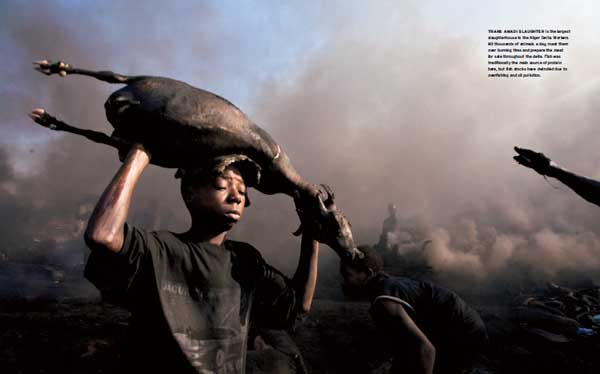
A. Newspapers and Online
1. Hard to see, impossible to turn away – Issues and images combine in ‘What Matters,’ a powerful and passionate new book
“Great documentary photojournalism, squeezed out of mainstream newspapers and magazines in an age of shrinking column inches, has had a hard time gaining traction in other venues… But nobody has told the 18 photographers in “What Matters: The World’s Preeminent Photojournalists and Thinkers Depict Essential Issues of Our Time.” These are photo essays by some of today’s best photojournalists following the great tradition begun over a hundred years ago with the expos?s of New York tenement life by Jacob Riis. Through the doggedness of these photographers?who are clearly committed to stirring us out of complacency?all the power and passion of the medium is evident in this book… Some of the pieces will break your heart, some will anger you. All will make you think. To channel your thoughts and feelings into action, the book ends with an appendix “What You Can Do,” offering hundreds of ways to be a part of the solution to these problems.”
– Chicago Tribune Book Review, 2 page spread
2. “Must viewing.”
– San Francisco Chronicle, 2 page story
3. Photographs that Can Change the World
“David Elliot Cohen?s new book, What Matters, which hits bookshelves today, is a collection of photo essays that explore 18 distinct social issues that define our time. Shot by the world?s most renowned photojournalists, including James Nachtwey, who has contributed to V.F., the photographs explore topics ranging from genocide and global warming to oil addiction and consumerism, offering a raw view into the problems that plague our world. Each photo essay is accompanied by written commentary from an expert on the issue. Cohen hopes the book will inspire people to work toward resolving these problems. ?Great photojournalism changed the world in the past, and it can do it again,? Cohen says. ?I want people to see these images, get angry, and act on that anger. Compelling images by the world?s best photojournalists is the most persuasive language I have to achieve this.?
– vanityfair.com
4. Book Review: What Matters
“Changing the world might sound like a lofty goal for a photo book, but that?s what the new book, What Matters, The World?s Preeminent Photojournalists and Thinkers Depict Essential Issues of our Time edited by David Elliot Cohen (Sterling Publishing, $28, 2008), hopes to do. Citing the power of socially conscious photographers over the last 150 years, the beautiful collection of 18 photo-essays by some of today?s prominent photojournalists hopes to ?inform pre-election debate and inspire direct action.” Regardless of what side of the political fence you sit on, this collection of heartbreaking and powerful stories and images is guaranteed to get you thinking.”
– Popular Photography
5. What Matters: The World’s Preeminent Photojournalists and Thinkers Depict Essential Issues of Our Time.
Those doubting the power of photojournalism to sway opinion and encourage action would do well to spend some time with this book. In 18 stories, each made up of photos by leading photojournalists and elucidated by short essays by public intellectuals and journalists, this book explores environmental devastation, war, disease, and the ravages of both poverty and great wealth. The photos are specific and personal in their subject matter and demonstrate how great photography can illuminate the universal by depicting the specific. Cohen has a goal beyond simply showcasing terrific photography. In his thoughtful introduction, he makes explicit his aim to connect the work compiled here with the great tradition of muckraking photography that helped to change conditions in New York tenements and to end child labor at the turn of the last century. A terrific concluding chapter directs readers to specific actions they can take if they are moved to do so by the book’s images, and it’s hard to imagine the reader who would not be moved. Highly recommended for public libraries and academic libraries supporting journalism and/or photography curricula. (a starred review in Library Journal generally means the book will be acquired by many libraries.)
– Library Journal
6. First of five part series about What Matters
(The first installment drew 500,000 page views)
– CNN.com
7. Second part in CNN. Black Dust by Shehzad Noorani
?The best years of my life?. Or, remittances earned
Subscribe to ShahidulNews
Rahnuma Ahmed
Amar jiboner sreshtho shomoita dilam. Amar joubon amake ke phirie debe?
(I gave the best years of my life. Who will give me back my youth?)
A Bangladeshi migrant. Paris, 2002.
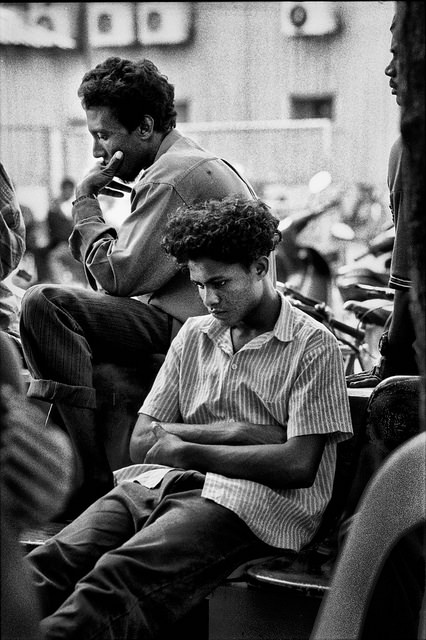
?The best years?. Being treated like an animal
?I slept many nights beside the road and spent many days without food. It was a painful life. I could not explain that life,? these are the words of a Bangladeshi migrant worker who had gone to Saudi Arabia. He was speaking to Human Rights Watch researchers who spoke to other Bangladeshi migrants, also to migrants from India and the Philippines (Bad Dreams: Exploitation and Abuse of Migrant Workers in Saudi Arabia, 2004).
But not all migrant workers were abused, not all were exploited to their bones. Somewhere else, I read about Manzur Ali who first went to Saudi Arabia in 1982, and later again in 1999. His first employment is the stuff that migrants? dreams are made of. His Saudi employer bore the entire cost of his travels. He worked in a construction firm as a carpenter. His monthly earnings, including overtime, reached twelve to thirteen hundred riyals, in our currency, 21,000 to 23,000 taka. Food, housing and medical facilities were provided; also, a fifty-day annual leave. Manzur worked for three years, returned home and started a business. His second visit was disastrous. He had to pay a recruiting agency 80,000 taka. His monthly wages were not the promised 9,500 riyal, but only 650. He had to work three times harder than before, if he failed, he was physically tortured. Since his employer did not give him his resident permit, he was not allowed to go outside the firm premises. Eleven months later he escaped to Riyadh, and to a long spell of illegal work. Caught by the police, he was arrested and deported to Bangladesh six years later.
Contrary to common expectations, migrants who enter legally and comply with government regulations can also be cheated, overworked, underpaid, or not paid at all. Bangladeshi workers repairing underground water pipes in Tabuk municipality, Saudi Arabia, told HRW researchers that they were forced to work ten to twelve hours a day, sometimes throughout the night and without any overtime pay. They were not paid salaries for the first two months, and had to borrow money from other Bangladeshis to buy food. Another migrant, who worked as a butcher in Dammam, was forced to leave the kingdom by his employer with six months of his salary unpaid.
Women migrant workers spoke of torturous working conditions. Hundreds of low-paid Asian women, who worked as cleaners in Jeddah hospitals, had to work twelve-hour days, without any food or break. After work, they were confined to locked dormitories. Skilled seamstresses from the Philippines, who worked twelve-hour days, spoke of not being permitted to leave their workplace, of being forbidden to speak more than a few words to customers and the Saudi owners. A Filipina, who worked for a family in Dammam, was raped by her male employer. She spoke of her trauma, and how she was constantly on the lookout for the front gate to be unguarded, so that she could escape.
But not only cruel employers and unscrupulous middlemen are to be blamed. Flawed immigration policies and gaps in labour laws expose migrants to trafficking, forced labour and other terrible abuses. A twenty-three-year-old Indian tailor, while in police custody, was beaten for two days. On the third day, his interrogators gave him two pages handwritten in Arabic. He was to sign his name three times on each page. He said, ?I was so afraid that I did not dare ask what the papers were, or what was written on them.?
What words do South and East Asian migrant workers use to describe their migrant situation? I kept coming across metaphors of slavery, of being treated like animals. By their employers, by recruiting agents, and also by embassy officials. A Bangladeshi migrant working in a textile factory in Jordan detailed the physical and verbal abuse doled out by his employer: ?severe beating, verbal insults, threats of deportation and forcing them to sign blank documents?. He said, five people, including two women, had been beaten over the past two days, and added, ?They want us to work like slaves.? Widyaningsih, a 35-year-old Indonesian woman, a would-be migrant to Malaysia, described the conditions she had faced while being recruited in Indonesia: The broker brought me to the training centre in Tanjung Pinang by ship?. they deducted my full wages for four-and-a-half months [to repay what they said were up-front costs]?. I had to spend two months at the training centre. We were never allowed outside, there was a very high gate and it was always locked. They treated us poorly, always calling us names like ?dog?. And a Bangladeshi woman, a migrant worker who had recently returned from the Middle East, said, Bangladeshi embassy officials ignore us, they don?t even recognise our difficulties, ?They treat us like animals.?
Objectifying migrant workers
At home, in circles of power, migration is discussed in two basic ways: in a language of absence or ?lack?, and in the language of remittances. Never in the language of suffering, or pain, or dreams crushed, or accountability.
Men and women who go abroad as migrant workers are described in terms of what they lack, they lack education, they lack skills (at most, they are described as ?semi?-skilled). There are deeper connotations, they seem to be lacking culture, lacking the best of what the nation has to offer. They have only their labour, and that too, menial. Their presence, and what they bring back as personal belongings (blankets, TVs, camera, mobile phones, photo frames), packed tightly in mounds of carefully sewn luggage often give rise to patronising looks of their better-off compatriots at airports.
But what migrant workers send back are not sources of embarrassment. Remittances belong to the nation. I watch experts speak at seminars and conferences with a self-congratulatory air. Migrant remittances, they say, are the ?major source of national revenue?, they enhance ?national economic growth?, Bangladesh is ?a notable exporter of manpower?. I see experts look prophetically into the future, ?From its current position Bangladesh has to increase its remittance income by 25 per cent year on year to generate remittances income of approximately US$ 30 billion in 2015.?
Sometimes, I hear them sound alarm bells. We get told, ?The rise in remittance and overseas employment is on the verge of witnessing a downward trend?, ?The government target of reaching fresh overseas employments to nine lakh this year is also likely to fall flat?, ?We can?t feel the blow of the bans or cut in overseas employment immediately, but after two to three years remittance will definitely dry up if no major changes take place?.
Migrant men and women are objects to the nation?s goals. They are never spoken of as heroes.
Family ties
I sit and chat with Shireen Huq, an old friend, whose mother, poet Jaheda Khanum, passed away this March. I prod her gently, what was it khala used to say about class differences between migrant families and our families?
Well, says Shireen, she would look at her Dhanmondi neighbours, at their expatriate sons and daughters, those who are well-educated, in professions, who live abroad and insist that the family home in Dhanmondi be turned over to developers, because they need the money there. Actually someone we know quite well, he has never sent anything, in twenty long years, not a single cent. Not for his mother, or his brother, or his sister. But as I was saying, someone amma knew well, immediately after she died her children insisted that the land be sold, they need the dollars abroad. But another neighbour, her children exerted tremendous pressure on her, but can you imagine, she was still living, they said to her, go and live in a small flat. We need the dollars now. I mean, they didn?t wait, they couldn?t wait for her to pass away. And amma, she would compare them with young migrant men she met in New York, she went there once, she would say, they turn their blood into water to send money to their families in Bangladesh. And then she would say, people of our class are paying for their economic and social mobility.
As I write, I grieve for Bahraini fashion designer Sana Al Jalahma, murdered in August 2006, and Mizan Noor Al Rahman Ayoub Mia, who worked for the family, and was accused and convicted of the murder. Mizan was executed by a firing squad early June 4, 2008.
Two lives lost. Lives, and losses, that are difficult to explain.
First published in New Age on Monday 9th June 2008
Film on migration: In Search of the shade of the Banyan Tree
Website on migration:Migrant Soul
Juggling, juggling, juggling
Subscribe to ShahidulNews
![]()
The Daily Star
Volume 4 Number 25
Sat. June 21, 2003
Literature
Travel Writing
Juggling, juggling, juggling…
Shahidul Alam
And while last week Fakrul Alam went on vacation to Indonesia, this week another, and very different, Bangladeshi (a photographer/gearhead in loosekurtapyjamas) flings himself headlong into Singapore to arrange a photography exhibition. With very different results.
I was getting closer to my usual time of arriving forty minutes before departure. The Singapore Airline guy had warned me to arrive three hours early. "The new computers…" he went on. I assured him I had flown several times since the new computers had been introduced at Zia. I had been there on day one, when these glistening new machines had led to long queues as confused immigration officers tapped in a letter at a time and constantly consulted more computer-savvy colleagues about the entry of some insignificant data.
Usually it was the migrant workers who were on the defensive, being made to feel worthless as they struggled with immigration forms. The roles had now been reversed. The workers seemed to enjoy waiting in line while their tormentors fumed in silence at the wonders of technology.
The flight was uneventful, except for the problems of trying to find a safe parking place for my six-foot print. Eventually the air hostess took my print away, leaving me nervously peering through the alleyway hoping she didn't fold it up to fit the container!
As we disembarked, we were greeted by another marvel of science. Another queue developed as the infrared cameras, revealed your body warmth. Posterised colours showed the relative warmth of every part of your upper anatomy as you walked by. It was live television!
It took people a while to work out who those people with strange colours were, but once it dawned, then it was movie time. Many years ago, on a cold day in London, I had noticed the coldness of the tip of my nose, and the near frost on my beard. I had always been curious about how the hairs on my chest would appear in infra red which the Singapore climate was far more suitable for observing.
Lance and Gim Lay ambled in. Gim Lay was a gallery official and had to make an appearance for her visiting artist, so she didn't have a choice, but I felt sorry for Lance, having to wake up at the ridiculous hours that Singapore Airlines arrives at, just because he's a friend.
After a very short pit stop at Teek's spacious studio, it was down to the gallery of the Singapore History Museum. We had agreed to give the show a 'raw' look. So construction scaffolding, helmets, sandbags, bricks, warning tape and cones had all been set up. Canvas strips hung on the scaffolding were to be our exhibition panels. By now I had been nearly eight hours without Internet and was getting withdrawal symptoms. Lance hurriedly inserted the appropriate IP numbers and I was online. Singaporean broadband was considerably different from Dhaka 'broadband' and I quickly went through my backlog of mail. Most of it was junk of course. After deleting the 101 tips for enlarging my privates, making 50,000 dollars a week offers plus the few Nigerian scams, I settled down to the urgent mail. Deadlines were looming. Salgado's images needed to be sourced, the workshop in Prague needed to be settled, and there were Pathshala exam sheets to be marked! I tried to get as much done using the museum connection. Even with these fast speeds, paying 15 Taka a minute at the hotel, took a bit of getting used to. The 15 Taka an hour Dhaka cyber cafés didn't seem so bad after all!
An army of volunteers had arrived, and I was expected to direct them about the setting up of the exhibition. It is difficult to appear intelligent when a horde of excited youngsters wait for each word to drop, especially when you don't have a clue as to where you are going. Still, the experience of having done this many times before did help, and with my eager volunteers, we were slowly getting the exhibition in shape. Gim Lin stormed in and out, pressing a row of panic buttons. The mounters were having problems with the inkjet prints. The precise positioning of my large prints needed my immediate attention. The television interview needed to be scheduled in, and what could I not eat?
Meanwhile I had other concerns. I had been surreptiously relieved of my Nokia Communicator the week before in a tram in Brussels, and being the techie freak that I was, not having a PDA phone was almost as bad as not being online 24 hours. So friends had been mobilised to research the PDA phone scene. What was available, where could we get it, who would give the best discount and who was going to accompany me to ensure I didn't get ripped off. I also needed a local person who would get the account on my behalf, as the phone company needed a local address.
Meanwhile Chor Lin, the director of the museum, came in for a courtesy visit. Her husband Peter Schoppert had masterminded the "Day in the Life of" series books for the Asean region, and we had many common friends. Raghu Rai in particular had been a frequent visitor while his books were being printed in Singapore. The technicians interjected in between: What did I need for my presentation? What program was I going to use? It all seemed so serious!
I managed to ring Justin. The last time we had met was when he had come over to Pathshala with David Wells for the workshop that led the lead story on Aramco magazine. Since then I had seen his Dhaka pictures in Time magazine, and I remember that ex-minister Abdul Mannan, during an earlier flight to Dhaka from Kuala Lumpur, had waxed lyrical on his slide show on Bangladesh. Justin was off the next morning to Shanghai, so that night was our only chance to meet. Eddie dropped me there and after a few mobile calls (how did we manage in the Dark Ages before mobiles?) Justin appeared at the other end of the park and directed us to the flat. The flat was a spacious house in Newton Circus and couldn't have been more ideally placed. Kaychin, Darren and Nick appeared bringing along P and P, who had set up the new photographic school Objectives and we all went to the food stalls. The food at Newton Circus was always nice and Justin knew where the best sting ray, guava juice and satay were to be found. Leaving Justin to pack for Shanghai, we went back to the museum, where I showed Darren the Chobi Mela II catalogue. They had been there throughout the circus that we had with customs and hadn't had a chance to see the shows that the customs had blocked, so the catalogue was the first chance they had to see the Malaysia and Salgado shows. We trundled home at around 3 a.m. to Tuck's Geylang Road studio, ready to drop.
The next morning the museum had geared up for action and every visitor was being asked to fill in a SARS form. Had you had any fever? Which countries had you visited. Any other symptoms? Who should we contact in case of trouble? A big A4 sheet every day for all gallery staff and visitors. More awaited. Chor Lin took us out for dinner in the evening, and the other speakers and the moderator were all there. As we walked towards the entrance of the restaurant and riverside point, a woman approached us with a thermometer in hand. Held rapier like, this tiny but evil looking device was clearly something she would relish inserting into some unsuspecting orifice. Gingerly we suggested we would sit outside in the patio. We didn't really need the airconditioned interiors and we were not going to have the buffet anyway. They agreed to make room for us by the river bank, but the rapier had not been sheathed. Gloved fingers tugged at my ear as it was brutally inserted inside. Chor Lin was delighted. This was a photo op! Being a photographer I could hardly say no. I was the only one with a camera, so I had to face the indignity of having my own camera used for immortalising on celluloid my ear-pulling session. The photographer was fussy. We had to stand in front of the aquarium, and crouch a bit so he would have the right composition. Not too much movement, as it was a slow shutter speed, and could the tester crouch too? At least my mother had not raised me for nothing. My one offering to humanity could be the pleasure I had given to so many Singaporeans as they chuckled to this spectacle. Oh how I waited for their turn!
It was refreshing to see so many photographers working into the early hours, as we mounted, trimmed, adjusted, hung the photographs. It reminded me of the early days of the Bangladesh Photographic Society. It felt so long ago.
Thursday was the big day. The opening was in the afternoon, and we still had plenty to do. Sandwiched between interviews, captions, a final edit and lighting adjustments took up most of the next day. Still no PDA phone. What was I going to do? Eddie suggested secondhand phones. Singaporeans apparently change phones every 2-3 months. A six-month-old phone was passé. So we should have been able to find a very good deal on a decent six-month-old set. The press had done their job, and friends whom I hadn't been able to contact, came over as they had seen me on TV. I had to sneak off to the computer several times as MC was breathing down my neck: were my exam papers marked yet? Some of the photographers had brought in their portfolios in between. Would I have time to review them please? It was going to be another long night. The next morning Nick and I went for a recce to Bugis. The salesman was quick to spot the techie freak and impressed me with the virtues of the operating system of the OX2. The Nokia and the Ericsson didn't stand a chance, and he was going to give me a special deal! I did have the judgement to take the time to consult my friends, and do some further research. Ed had mentioned scouting the Saturday papers where the best deals were to be found. But the salesman had done his job, and I was well and truly hooked.
Choy had asked us to arrive early to the auditorium to plan the presentation, and I arrived a bit late: There had been so many phones on offer at Bugis!
But everything went fine, all according to plan. And on the plane back home, I slept the sleep of the dead.
Shahidul Alam heads Drik Picture Gallery in Dhaka.
Changing their destiny
Subscribe to ShahidulNews
www.newint.org/issue287/contents.html
Letter from Bangladesh
Changing their destiny
Shahidul Alam travels with the poor who chase a dream to distant lands.
They all have numbers. Jeans tucked into their high-ankled sneakers. They strut through the airport lounge, moving en masse. We work our way up the corridors leading to the airplane, but many stop just before boarding. The cocky gait has gone. The sad faces look out longingly at the small figures silhouetted on the rooftops. They wave and they wave and they wave. The stewardess has seen it all before and rounds them up, herding them into the aircraft. One by one they disengage themselves, probably realizing for the first time just what they are leaving behind.

As in the case of the others, his had been no ordinary farewell. They had all come from the village to see him off. Last night, as they slept outside the exclusive passenger lounge, they had prayed together. Abdul Malek has few illusions. He realizes that on $110 a month, for 18 months, there is no way he can save enough to replace the money that his family has invested.
But he sees it differently. No-one from his village has ever been abroad. His sisters would get married. His mother would have her roof repaired, and he would be able to find work for others from the village. This trip is not for him alone. His whole family, even his whole village, are going to change their destiny.
That single hope, to change one’s destiny, is what ties all migrants together ? whether they be the Bangladeshis who work in the forests of Malaysia, those like Abdul Malek, who work as unskilled labour in the Middle East, or those that go to the promised lands of the US. Not all of them are poor. Many are skilled and well educated. Still, the possibility of changing one’s destiny is the single driving force that pushes people into precarious journeys all across the globe. They see it not merely as a means for economic freedom, but also as a means for social mobility.
In the 25 years since independence the middle class in Bangladesh has prospered, and many of its members have climbed the social ladder. But except for a very few rags-to-riches stories, the poor have been well and truly entrenched in poverty. They see little hope of ever being able to claw their way out of it, except perhaps through the promise of distant lands.
So it is that hundreds of workers mill around the Kuwait Embassy in Gulshan, the posh part of Dhaka where the wealthy Bangladeshis and the foreigners live. Kuwait has begun recruiting again after the hiatus caused by the Gulf War, and for the many Bangladeshis who left during the War, and those who have been waiting in the wings, the arduous struggle is beginning. False passports, employment agents, attempts to bribe immigration officials, the long uncertain wait.
Some wait outside the office of ‘Prince Musa’ in Banani. He is king of the agents. His secretary shows me the giant portraits taken with ‘coloured gels’, in an early Hollywood style. She carefully searches for the admiration in my eyes she has known to expect in others. She brings out the press cuttings: the glowing tributes paid by Forbes, the US magazine for and about the wealthy, the stories of his associations with the jet set. She talks of the culture of the man, his sense of style, his private jet, his place in the world of fashion.
Apart from the sensational eight-million-dollar donation to the British Labour Party in 1994 ? which Labour denies, but which the ‘Prince’ insists was accepted ? there are other stories. Some of these I can verify, like the rosewater used for his bath, and the diamond pendants on his shoes (reportedly worth three million dollars). Others, like his friendship with the Sultan of Brunei, the Saudi Royals and leading Western politicians, are attested to by photographs in family albums.
He was once a young man from a small town in Faridpur, not too distant from Abdul Malek’s home or economic position, who made good. Whether the wealth of the ‘Prince’ derives mainly from commissions paid by thousands of Maleks all over Bangladesh or whether, as many assume, it is from lucrative arms deals, the incongruity of it all remains: the fabulously wealthy are earning from the poorest of the poor.
Whereas the ‘Prince’ has emigrated to the city and saves most of his money abroad, Malek and his friends save every penny and send it to the local bank in their village. Malek is different from the many Bengalis who emigrated to the West after World War Two, when immigration was easier and naturalization laws allowed people to settle. Malek, like his friends, has no illusions about ‘settling’ overseas. He knows only too well his status amongst those who know him only as cheap labour. Bangladesh is clearly, irrevocably, his home. He merely wants a better life for himself than the Bangladeshi princes have reserved for him.
An old friend of the NI, Shahidul Alam is guiding light of Drik, a remarkable photographic agency in Dhaka.
